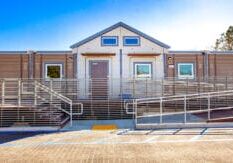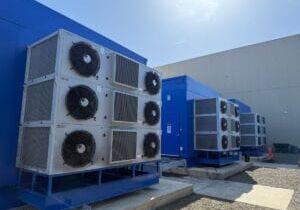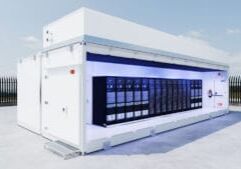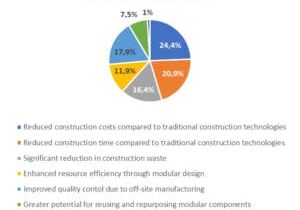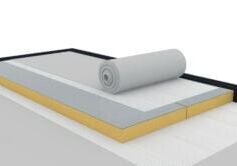355 Sango Court Etude de cas
Le projet
Sango Court est un programme de location d'appartements abordables à Milpitas, CA. Cet ensemble de 102 logements, adapté aux transports en commun, se trouve à environ 800 mètres de la station BART la plus proche, et à proximité de parcs, de magasins, d'écoles, de restaurants et de nombreux employeurs. Il s'agit donc d'une perle potentielle dans une zone où les loyers sont élevés et où le besoin de logements abordables se fait cruellement sentir.

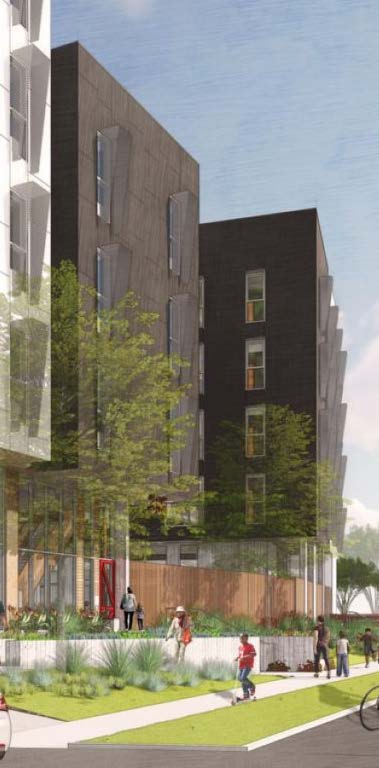
Sango Court, conçu par David Baker Architects, offre à ses résidents de la région de la baie un design très ouvert et agréable à vivre.
Le défi
Autovol, considérée par beaucoup comme l'opération modulaire multifamiliale la plus avancée technologiquement en Amérique, était encore relativement nouvelle sur la scène. Jusqu'alors, l'équipe unique homme-robot de cette entreprise jeune de trois ans n'avait construit des projets que pour un seul client. L'approche fortement automatisée d'Autovol avait rapidement fait ses preuves en réalisant avec succès 6 projets multifamiliaux pour TPC en seulement deux ans. L'usine allait maintenant être mise à l'épreuve avec son deuxième client, un novice en matière de construction modulaire, avec un projet déjà conçu, dans un délai serré.
Pré-construction de missions critiques
Autovol a été le premier à utiliser l'automatisation et la robotique pour améliorer la construction modulaire en faisant le gros du travail et en ajoutant la précision d'une machine aux tâches répétitives de la charpente. La méthode de préconstruction à forte intensité de logique exigée par la construction modulaire automatisée a apporté des avantages supplémentaires au projet Sango Court. Autovol a travaillé côte à côte avec l'innovateur Prefab Logic, spécialisé dans la préconstruction, pour créer une approche de modélisation par jumeaux numériques et un processus de sprint aussi avancé que l'usine Autovol. L'approche de Prefab Logic consiste à construire un projet dans les moindres détails sous la forme d'un jumeau numérique, en impliquant toutes les parties prenantes dès le départ. Les données intégrées dans le jumeau numérique déterminent tout dans l'exécution : le code d'instruction robotique, les programmes de détection des collisions, les modèles 3D VR et AR pour les approbations et pour guider les artisans, ainsi que l'approvisionnement en matériaux et les listes d'enlèvement. Le modèle de sprint a été conçu pour forcer la prise de décision collaborative en amont, lorsque les changements peuvent être effectués numériquement. Cela permet d'éviter des changements ultérieurs qui peuvent avoir des répercussions sur les coûts et des retards de plusieurs ordres de grandeur une fois que le bâtiment physique est en cours d'exécution. Tim Mathson, directeur des opérations de Prefab Logic pendant la préconstruction, a déclaré que l'équipe s'est vraiment appuyée sur cette approche pour résoudre une variété d'aspects uniques de la conception du bâtiment.
"Pour s'assurer que les éléments construits dans l'usine et sur le site s'alignent, tout devait être parfait, au quart de pouce près", explique Mathson. "Beaucoup de choses devaient être coordonnées très rapidement sur une conception qui avait été élaborée pendant des années, avec une usine qui avait des exigences très spécifiques en matière de cadrage robotisé, mais aussi des approches très normalisées en matière de conception et de matériaux qui optimisent les coûts et l'efficacité.
Défis en matière de conception
Certaines des caractéristiques inventives conçues pour rendre le Sango Court unique et vivable pour les résidents ont posé des problèmes : Une grande buanderie nécessitant une ventilation spéciale. De grands conduits d'air frais dans les chambres. Des couloirs ouverts et inclinés. L'absence d'un compartiment pour la mécanique, l'électricité et la plomberie dans les couloirs. Une façade extérieure comportant des "fenêtres en dents de scie" (une caractéristique qui a été supprimée lors des révisions de la conception). Ces éléments de conception, ainsi que d'autres, ont nécessité une modélisation non seulement pour la construction en usine, mais aussi pour guider les sous-traitants sur le chantier.
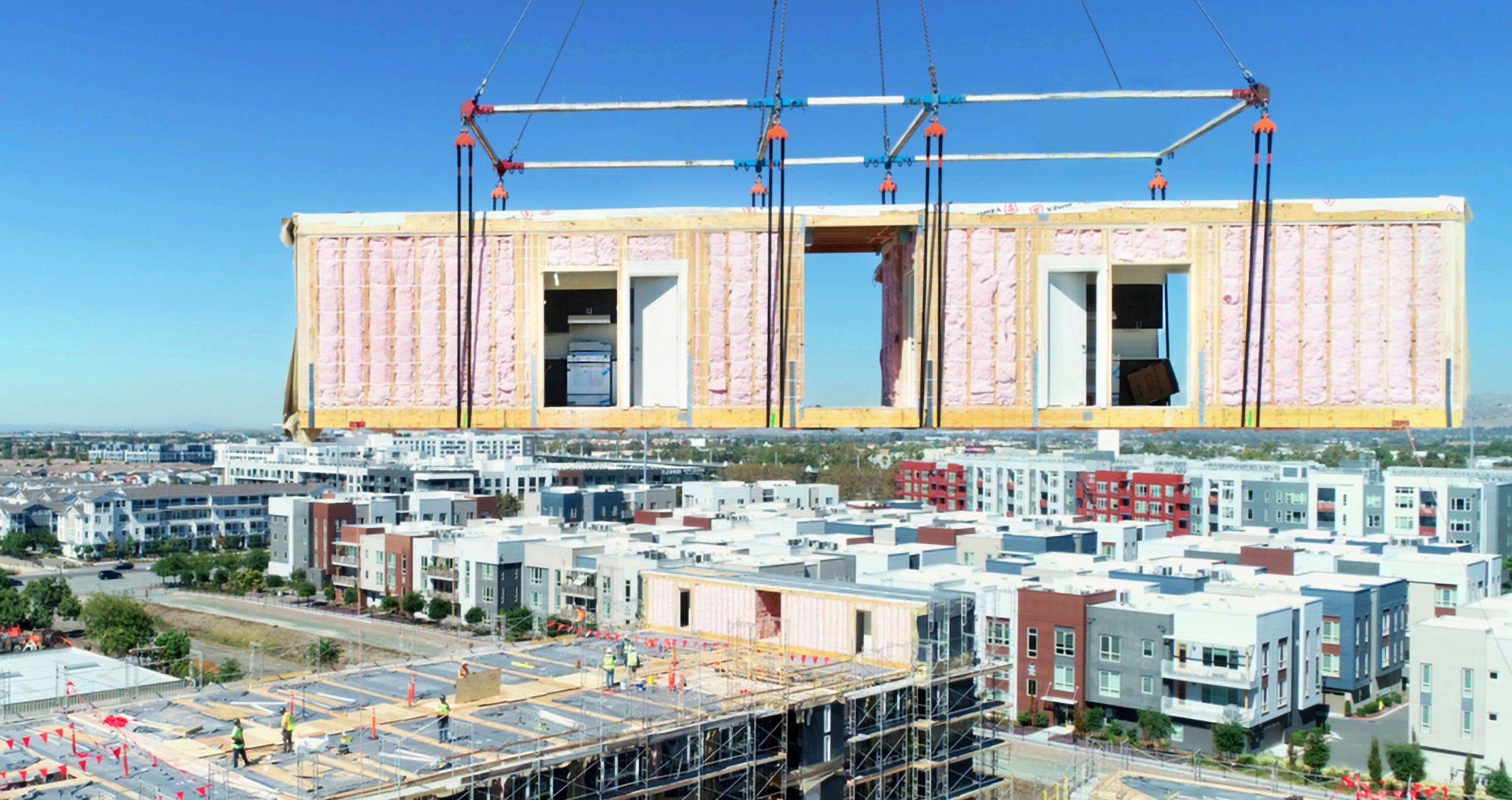
Go Time
Le temps total en ligne dans l'usine, à part le prototypage, a été d'environ 9 semaines. Au cours de cette période, les 102 unités ont été encadrées, câblées, plomberies, planchers, isolées et inspectées. Tous les appareils électroménagers et les finitions intérieures ont été achevés. Le projet comprenait des studios, ainsi que des unités de 1, 2 et 3 chambres à coucher. Chaque module a été soigneusement planifié pour être assemblé sur place dans un ordre précis.
Entrez dans le 355 Sango Court
Cliquez sur le lien ci-dessous pour télécharger l'étude de cas interactive approfondie :
Découvrez les points forts du décor de Sango Court ainsi qu'une visite architecturale en 3D de la cuisine et de la salle de bains.
Plus de Modular Advantage
Resia : briser toutes les règles
Resia Manufacturing, une division de la société américaine Resia, propose désormais des éléments préfabriqués de salles de bains et de cuisines à ses partenaires industriels. Son usine de fabrication hybride produit des éléments de salle de bains et de cuisine (modules) plus précis, plus rapidement et à moindre coût que la construction traditionnelle. Voici comment Resia Manufacturing procède.
Comment LINQ Modular innove pour mettre le modulaire sur le marché dans les Émirats arabes unis et au-delà
LINQ Modular, qui dispose d'un bureau et de trois sites de production à Dubaï, est une entreprise modulaire basée aux Émirats arabes unis. L'entreprise a une mission : ouvrir les marchés du logement et de la construction dans la région du Conseil de coopération du Golfe (CCG) grâce à la construction modulaire.
ModMax : redéfinir la construction modulaire avec confiance et précision
ModMax est né d'une frustration - une frustration liée à cinq points douloureux persistants dans la construction modulaire : Goulots d'étranglement au niveau des permis. Les retards de production. Conceptions rigides. Déconnexion entre le bureau et le terrain. Manque de transparence et de communication.
LifeArk : Des habitations résistantes aux catastrophes naturelles grâce à du plastique recyclé et à une technologie vieille de 100 ans
Wee compare les unités d'habitation de LifeArk aux glacières Yeti, car elles sont construites de la même manière. Chaque élément prend 15 à 20 minutes à fabriquer, a une valeur R de 40, et comprend des fentes et des gorges moulées pour le câblage, la plomberie, les gicleurs d'incendie et d'autres utilités.
Construire l'avenir de l'infrastructure modulaire de périphérie
Le marché des centres de données périphériques se développe rapidement, sous l'effet de la montée en puissance des charges de travail d'IA, de l'adoption de l'IoT et de la nécessité d'une puissance de calcul localisée. Dans ces environnements, la durabilité, l'évolutivité et la fiabilité ne sont pas négociables. Le refroidissement fait partie des défis les plus complexes pour les opérateurs - et l'un des facteurs les plus décisifs pour la réussite à long terme.
Accélérer la construction en acier léger : Un flux de travail numérique semi-automatisé pour les projets hors site
Pour les professionnels de la construction, le message est clair. En adoptant la semi-automatisation et la numérisation, les entreprises peuvent réaliser des projets plus rapidement, avec plus de précision et de manière plus rentable, tout en renforçant la collaboration entre les équipes. Il ne s'agit pas de remplacer les hommes par des machines, mais de les doter d'outils et de processus plus performants.
Pourquoi les centres de données modulaires ont-ils le vent en poupe ?
L'intelligence artificielle, l'informatique haute performance et les applications de périphérie repoussent les limites des centres de données traditionnels. Leur construction prend des années, ils ont souvent du mal à gérer les charges de travail à haute densité et ne sont pas optimisés pour les déploiements à proximité des utilisateurs finaux. Les plateformes de centres de données modulaires sont spécialement conçues pour relever ces défis, offrant la flexibilité et l'évolutivité nécessaires pour s'adapter à l'évolution des technologies, tout en ouvrant de nouvelles opportunités pour l'industrie de la construction modulaire.
L'innovation de la chaîne d'approvisionnement en action : 5 habitudes que tout dirigeant modulaire devrait mettre en pratique
En appliquant ces principes aux pratiques de la chaîne d'approvisionnement - planification collaborative, approvisionnement stratégique, modélisation de scénarios, outils numériques et prévisions transparentes - les dirigeants du secteur de la construction peuvent construire des chaînes de valeur qui ne sont pas seulement efficaces et agiles, mais véritablement innovantes.
Explorer le rôle de la construction modulaire intégrée (MiC) dans la promotion des principes de la ville circulaire - Une enquête sur les perspectives des parties prenantes
Les résultats de l'enquête soulignent le potentiel significatif de la construction modulaire intégrée (MiC) pour faire progresser le développement des villes circulaires. En réduisant les coûts, en accélérant les délais de construction et en minimisant la production de déchets, la MiC offre une approche prometteuse du développement urbain durable.
Utilisation de mastics et d'adhésifs à base de MS POLYMER™ dans les bâtiments modulaires
Ces produits combinent flexibilité et reprise élastique avec une excellente adhésion à différents substrats et ont déjà démontré leur utilité dans la construction traditionnelle. Ils ont déjà démontré leur utilité dans la construction traditionnelle. Il est maintenant temps de les utiliser dans l'industrie de la construction modulaire.






